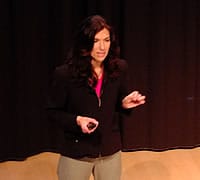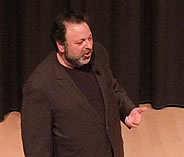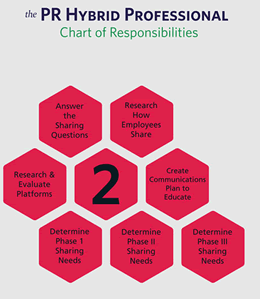
Put a bunch of PR professionals in a conference room and you get presentations filled with tweetable data, quotes and cases where content marketing, storytelling and social media take center stage. And that’s how it should be. Welcome to the age of the human voice and the integration (or rather: connection) of social, content and PR (and anything else really).
Recently, I went to the second annual International Social Media & PR summit, organized by Ragan Communications, Dutch PR, content marketing and social media company (see the mix?) company coopr and ING the Netherlands in rainy Amsterdam. I was just in time to watch the late afternoon presentations by MTV’s Peter von Satzger, no-nonsense pro Shel Holtz and Deirdre – “put back the public in public relations” – Breakenridge, your place to go for PR 2.0 (that rhymed).
I was looking forward to talk further with Shel the second day, listen to Scott Monty and see the LEGO storytelling case but unfortunately I had to drive back earlier for personal reasons. However, what I watched and listened to was more than interesting. I’ll report on the presentations of Shel and Deirdre soon (first in Dutch) but here are some general thoughts.
Why social media and content matter to you? Because it’s not (just) about you
The topics of the three workshops couldn’t be more different: while Peter covered the rather “norm breaking” PR and communications efforts of MTV and some lessons learned for a specific demographic, Shel gave an excellent presentation on crisis communication and Deirdre was energetic Deirdre with the role of social in PR.
Yet, there is a thread (there always is), depending on your viewpoint. And I was glad I could quickly chat about it (sometimes really quickly) with some of the speakers. The thread is social, content and PR. And most of all people, emotions and processes (as usual).
First of all, in case you’re still confronted with that eternal question “why you should be on social media” (or use and watch content for that matter), PR is one of many possible answers. Because, in case you missed it, social is where news breaks and travels but also happens. As Shel Holtz said: “it’s not just about getting your content shared, but also about watching the shared content”. You probably know most of the cases proving that (covering them soon) but for PR – and the business as a whole – the consequences are impactful.
It’s not just about getting your content shared, but also about watching the shared content (Shel Holtz).
Today you better acknowledge there’s an issue right away, keep informing the public (even if there is nothing really new to share during a crisis) and use/watch/analyze those social channels, including blogs and video.
Putting back the emotion in PR (or marketing as there’s no e in PR)

However, it’s not that much about the channels themselves. It’s about the audiences and individual people. Please remember this sentence from Shel’s presentation (again, in a PR crisis context but look further): “emotion, not logic is at issue”. You know that and you also emotion is what matters beyond PR: in the buying decision, marketing, sales, etc.
Treat perceptions as facts (in the eyes of your ‘audience’). (Shel Holtz)
Emotion is your focus. That of the audience, your customers, whatever. And guess what: if you already have that human voice out there, it’s so much easier to communicate with an emotional, news-hungry and risk-averse audience. At least, if the processes are in place.
Those processes are what I’m most interested in myself. While PR is about many things, including creativity, credibility, content, storytelling, crises, the ways you conduct the conversations (and sometimes change them), social, internal education, etc.; it’s simply all connected.
PR in a connected context: on making holes in silos
During a quick talk with Shel on the ways PR, marketing, employee education, etc. are connected here’s what he said: “it’s not about tearing down the silos, it’s about getting holes in the silos”. Holes through which you social team, PR folks, marketing, HR, sales, etc. get that emotion-centric, people-centric, audience-centric or customer-centric (pick your favorite) approach and communications flow. Structure, be prepared and don’t let the C-level out.

Deirdre had a similar message: when it boils down to the ‘de facto’ organization of social, content and PR (and more) it’s not that much about job titles and organizational blueprints around functions. Nope, it’s about the workflows, the tasks, the actual job.
At the end of her presentation, Deirdre talked about the fact that PR cares about reputation and so on but PR 2.0 also cares about sales, leads and more. She saved it for last (and was the last speaker) so it might have been lost a bit. But she saved it for last because it is e-s-s-e-n-t-i-a-l.
Just look at the “8 PR practices infographics” going with her latest book, “Social Media and Public Relations: Eight New Practices for the PR Professional“. The PR “hybrid” Professional… Sounds like the holistic and customer-centric marketer, doesn’t it? See the role of audience profiles (buyer personas, anyone?) or of internal collaboration? Or even the tech tester? Check it out.
Social, content and PR: credibility, perception and a human voice
The higher level matters, the audience matters, the customer matters, the employee matters. And the common denominators are emotion, GOOD communications and listening. Not in the passive way so many businesses still do it. But in the active and pro-active way. The stories, relationships and people are there and will always be there.
Talk, today, the human way. Why? Many reasons but here is one and I quote Shel Holtz again: “no one believes business advocates”. We’re all communicators: we listen and speak. And so does everyone. But to be a good communicator, get serious about the ways you analyze, network, connect, understand, create and use social and content in a collaborative and cross-channel way, with a human voice.
It’s really about the “audience” (and individual), whatever area you’re in (in this case PR). A last quote from Shel in that regard: “treat perceptions as facts”. Think it through.

